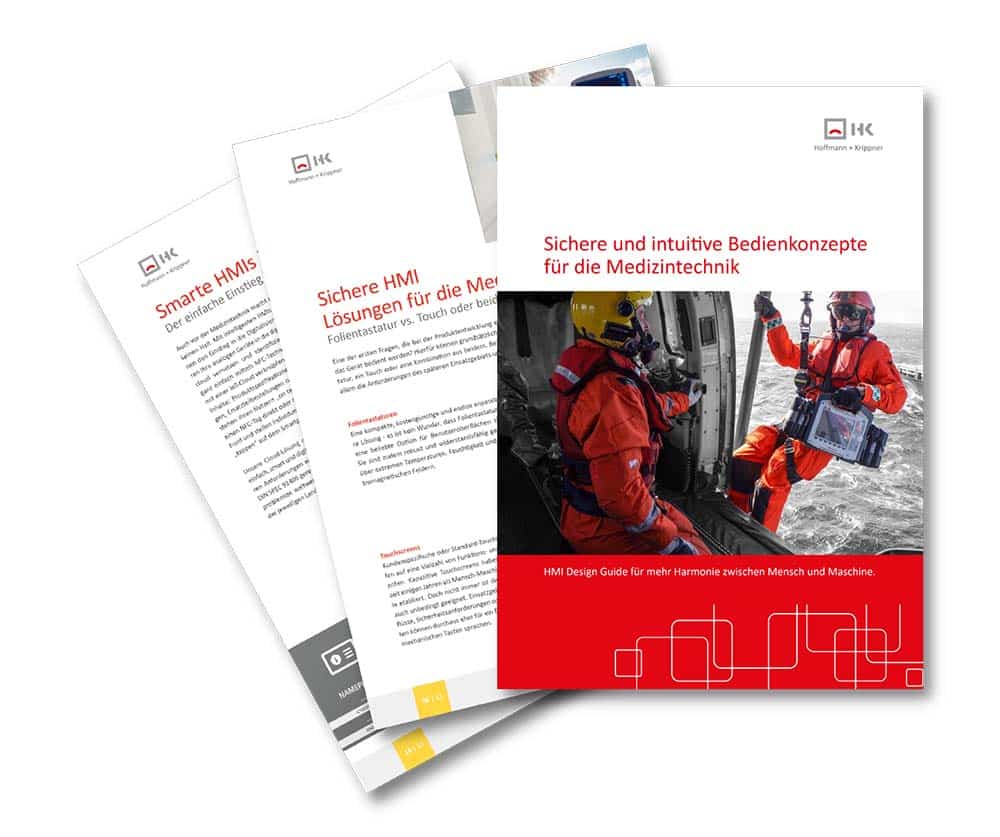What is important for an HMI in medical technology?
Time pressure, pressure to act, difficult emergency situations, demanding operations, complex care scenarios in intensive care units: Many doctors, medical professionals and a large proportion of the accompanying medical staff master major challenges on a daily basis. In the very best cases, they save people’s lives – supported by the use of increasingly powerful medical devices. However, for these to fulfill their purpose ideally, they should be easy and safe to use. Medical equipment that is difficult to operate and prone to faults leads to errors in day-to-day work or in an emergency, where every second counts and you have to rely on the medical equipment completely. But some of these devices often lack intuitive and safe operating concepts.
We would like to change that!
With extensive knowledge of HMIs in medical technology, our design guide ensures greater harmony between man and machine.
In our design guide, we show you:
- safe HMI solutions for medical technology
- possible technologies with their advantages and disadvantages
- flexible, thin sensor solutions for medical devices
- Design options and finishes
- required protection and sealing concepts
- necessary certifications and approvals

Get our HMI design guide for medical technology now

